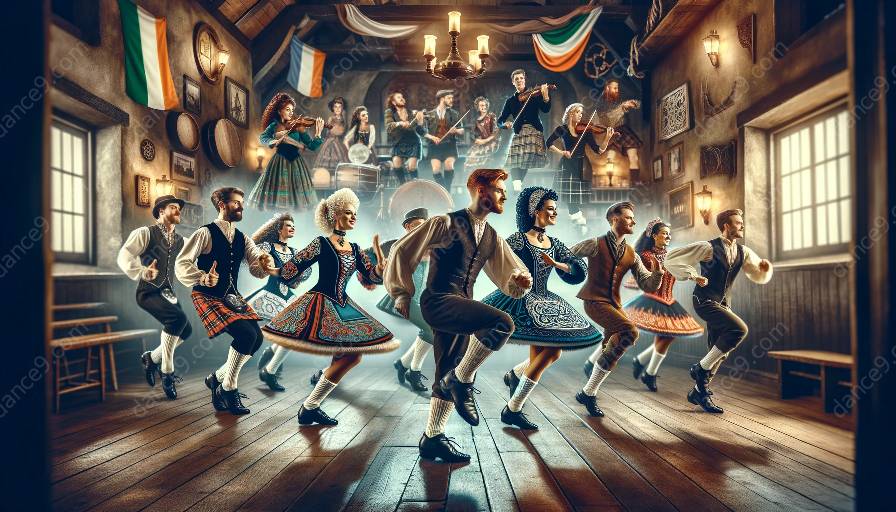Irish dance is a traditional dance form that has captivated audiences with its lively and intricate footwork. Whether you're a beginner or enthusiast, mastering the basic steps of Irish dance is essential for performing the graceful and energetic movements synonymous with this art form. In this guide, we'll delve into the foundational steps of Irish dance, providing an in-depth look at the techniques and styles that make it so unique.
The History and Overview of Irish Dance
To truly understand the basic steps of Irish dance, it's important to appreciate its rich history and cultural significance. Irish dance has deep roots in the traditions of the Celtic people, with its origins dating back centuries. Historically, dance was a central part of Irish social gatherings, celebrations, and religious ceremonies, serving as a form of expression and entertainment.
Over time, Irish dance evolved into distinct styles, with solo step dancing and group ceili dancing becoming prominent features. Solo step dancing, characterized by its intricate footwork and precise movements, gained international recognition thanks to the popularization of Irish dance competitions and performances.
On the other hand, ceili dancing, a communal style of dance typically performed in groups, embodies the communal spirit and shared enjoyment of Irish dance. These diverse styles collectively contribute to the vibrant and dynamic world of Irish dance.
Exploring the Basic Steps
Irish dance is renowned for its precise footwork and distinctive rhythms, both of which are epitomized in the basic steps that form the foundation of this art form. The classic Irish dance posture, with arms held at the dancer's sides and a straight back, sets the stage for the intricate foot movements that follow.
The Basics of Soft Shoe Dancing
Soft shoe dancing is an integral part of Irish dance, characterized by its fluid, graceful movements and the absence of traditional tap shoes. The basic steps in soft shoe dancing include the following:
- The Reel: A lively and quick dance that features a signature rhythm, the reel is one of the most recognizable Irish dances. Dancers perform intricate footwork, incorporating hops, skips, and light jumps with precise timing.
- The Light Jig: This joyful dance is performed in 6/8 time and emphasizes the elevation and extension of the legs. It showcases the dancer's agility and control, requiring swift yet graceful movements.
- The Slip Jig: Known for its graceful and fluid movements, the slip jig highlights the dancer's ability to maintain a light and effortless appearance while executing precise footwork. Dancers perform graceful leaps and intricate steps, creating a captivating and ethereal performance.
The Basics of Hard Shoe Dancing
Hard shoe dancing introduces a new dimension to Irish dance, featuring rhythmic patterns and percussive sounds produced by the hard-soled shoes. The basic steps of hard shoe dancing incorporate powerful movements and dynamic rhythms, such as:
- The Treble Jig: This compelling dance showcases the dancer's ability to create complex and vigorous rhythms using their hard shoes. The treble jig features intricate footwork, including triplets and intricate sequences of taps and stomps.
- The Hornpipe: Characterized by its syncopated rhythms and lively movements, the hornpipe demands precision and agility. Dancers perform intricate footwork, often incorporating leg and foot extensions to create a visually captivating performance.
- The Traditional Set Dances: Set dances represent a distinct category within Irish dance, with each dance featuring a specific series of steps and movements. Each set dance has its own unique structure and footwork patterns, providing dancers with a rich and varied repertoire to master.
Joining Irish Dance Classes
Embarking on your Irish dance journey involves immersing yourself in the vibrant and welcoming community of Irish dance enthusiasts. To master the basic steps of Irish dance and refine your technique, enrolling in dance classes led by experienced instructors is the ideal approach.
Irish dance classes cater to dancers of all ages and skill levels, offering a nurturing and supportive environment where students can develop their abilities and passion for this captivating art form. Experienced instructors guide students through the fundamental techniques, helping them build a strong foundation in Irish dance and cultivate a deep appreciation for its cultural heritage.
Through regular practice and dedicated training, aspiring dancers can gradually hone their skills, mastering the basic steps and advancing to more intricate and challenging choreographies. Additionally, participating in Irish dance classes provides opportunities for social interaction, fostering connections with fellow dancers and cultivating a sense of camaraderie within the Irish dance community.
Conclusion
Mastering the basic steps of Irish dance is a fulfilling and enriching journey that offers a window into the captivating world of Celtic traditions and artistic expression. By embracing the historical significance and cultural legacy of Irish dance, aspiring dancers can deepen their understanding and appreciation of this enduring art form.
Whether you are drawn to the lively rhythms of the reel, the graceful fluidity of the slip jig, or the infectious energy of ceili dancing, embarking on your Irish dance journey is a testament to the enduring appeal and universal joy of this remarkable art form. Joining Irish dance classes and immersing yourself in the spirited community of dancers will not only enhance your technical proficiency but also enrich your understanding of the diverse and vibrant heritage of Irish dance.













































































